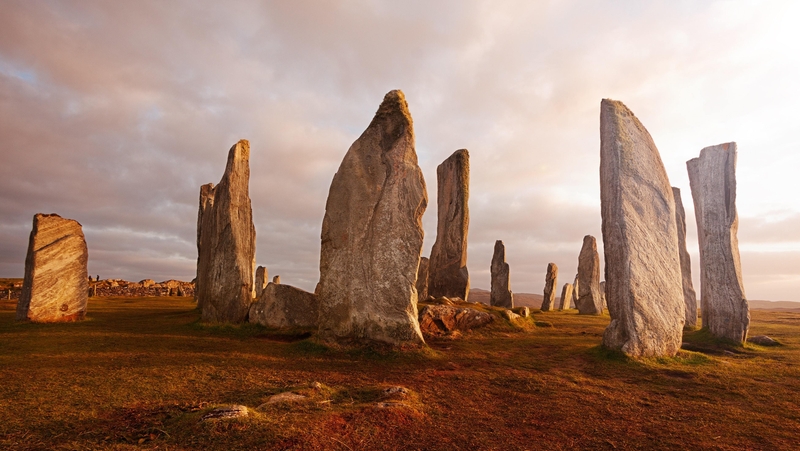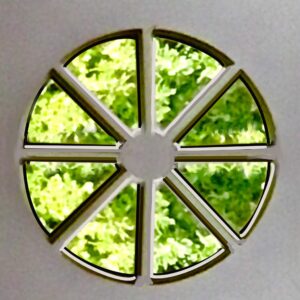
Author: undergrids1
Undergrid Five (of fifty)
Hyperfocus

Undergrid Six (of Fifty)

What is Melancholia?
Depression is defined as pathological sadness – a disease for which there are a variety of treatments. I myself have suffered from episodes of severe depression, and I have successfully overcome these episodes with a combination of Cognitive/Behavioral Therapy, anti-depressant medication, exercise, and meditation. Because I have first-hand knowledge of depression and the effectiveness of treatment, I think it’s essential that I differentiate depression, which always involves some sort of disfunction, maladaptation, or physiological imbalance, from melancholia (as in The Black Sun,) which I define differently.
To put it simply, depression is a disease; so if you are depressed, something is wrong with you. You are feeling an overwhelming and continual despondency that is inappropriate to your particular circumstances, and more generally, atypical of a healthy, thriving human being. You have an illness that warps your perception of the world, and you need treatment.
However, when you experience melancholia, there is nothing wrong with you. The “symptoms” you are feeling – lethargy, pessimism, low motivation, slowness, emptiness, grief, loneliness and even thoughts of suicide – come from a deeply felt awareness of death, loss, and impermanence. These feelings are entirely appropriate to your situation, and to the human condition, and may reveal some essential truth about your world.
In melancholia, suicidal ideation is not a literal impulse to kill one’s physical body, but a longing for transformation, both of one’s identity and the world in which that identity is enmeshed. (In later blogs, I will introduce the concept of egoicide.) Melancholia is not a problem to be solved or a condition to be cured; it is a truth to be encountered, an experience to be felt more deeply, and a window to insight.
I associate melancholy with many of the topics that obsess me, including Buddhism, Post-Jungian psychology, Imaginal experience, mysticism, existentialism, art, aesthetics, cinema, and even mathematics. It’s a word that I will use often in this blog, and it’s important that readers understand that I am not romanticizing depression, rather, I am investigating a related, but unique state of conciousness.
In the Venn Diagram below, I’ve differentiated four separate kinds of sorrow or despondency. YELLOW is ordinary sadness, the kind of sadness we feel in response to common disappointments, failures, and losses. GREEN denotes depression as treated by CBT; it is a negative cognitive bias caused by negative automatic thoughts, maladaptive behaviors, and/or dysfunctional world beliefs. BLUE is depression caused by a chemical imbalance in the brain – a deficit of serotonin and dopamine. Pink, at the bottom, is melancholia.

It seems likely that most of us are feeling some mixture of these four elements when our mood is low. My point is not to argue whether the neurochemical model or the Cognitive/Behavioral model of depression is valid, but rather to differentiate depression-as-illness from melancholy.

In particular, I want to challenge our culture’s relentless pursuit of happiness and obsession with psychological growth. If sunny optimism defines what it is to be “healthy,” then the culture begins to see any encounter with the darker, more tragic, and rightly depressing aspects of life as “unhealthy.” Melancholia is seen as something to be avoided, like saturated fat, herpes or income tax.
When we “grow out of” every experience of deep sadness, then melancholia as a necessary, vital and enriching human experience, is denied and forgotten.
Future blogs will explore the idea that our inability to tolerate sadness (like our inability to tolerate boredom) results in a “positive cognitive bias” or patholgical happiness, which may ultimately be more destructive than depression. Lingering over the inevitability of death, illness, and decay disturbs our very American fantasies of perpetual expansion, economic growth, and boundless possibility.

(See my recent blog about the perverted symbolism of sunny, happy, optimism: The Tyranny of Sunlight. )
If melancholy is seen as just another problem to be solved by programs of self-improvement, then vital parts of the human experience fall into Shadow -unacknowledged and unspoken.

So, the process I’m exploring in this series of articles on The Black Sun is one that DOES treat the various forms of depression as illnesses, but the goal is not to eliminate the experience of deep and heavy sadness, but instead to correct our cognitive bias and right our neurological imbalance so as to allow for a more meaningful and transformative encounter with melancholy.
James Hillman described this process in “The Dream and The Underworld” as a deliberate descent into Hades. This descent humbles the “heroic” ego. It is not a quest with an objective, or a riddle that needs answer. It is a “move backward” rather than forward, a process that is “pathologizing” rather than healing; it is an experience that offers not happiness, progress or victory, but only meaning and depth; It is an unsettling and eerie encounter with a dream world that is both irrational and psychotic; it is a voyage into imaginal space, and eruption of the Ordinary Numinous in which we wrestle with archetypal entities, neither quite real or unreal, who are “deceptive, unpredictable, frightening, and wise.” It is the journey down into the mythical and the alchemical – a place that we can only interpret with metaphors or images, as we would a dream:
“The brood of night gives the dream an atmophere that is far from the happy optimism of growth psychology or the secret delight of sexual desire. We are not being told that our dreams help us, that they round out our lives and inflame our creativity. Nor are we being told that dreams pour out of a libidinous wishing well. Instead, they are akin to deceits and and conflicts, to the lamentations of ageing and the doom of our destiny. The dream takes us downward, and the mood that corresponds with this movement is the slowing, saddening, introspective feeling of melancholly.”
James Hillman, The Dream and The Underworld, pg. 34
So, using my own images, an experience of melancholy means peeling away the layers of yellow, green, blue, to reveal the red… and the black.

That “something that emerges” is represented by The Black Sun.

Trees
Today I took time out from my musings on the Black Sun, and I drove up to the mountains to draw some trees:



I’ll write about why trees loom tall in my imagination another time.
Numinous #1
Inspired when ultra-bright flowers nodded at me.

Ordinary Numinous
One of the symptoms of severe depression is a “loss of meaning.” Activities and goals that once seemed urgent, suddenly appear trivial, transparent as ghosts. The world starts to feel immaterial. Nothing matters. Although the body feels heavy, as if made of led, the purpose and function of ordinary material things feel vaporous. Interacting with the material world – doing dishes, taking a shower, walking the dog or cleaning one’s office – becomes confusing and overwhelming.
This is the weight of The Black Sun, which hangs dark and leaden, warping the horizon and poisoning the sky.
However, unlike neurochemical depression, for which we take drugs, or depression of cognition and behavior, for which we have short-term talk-therapy, what I am experiencing now is melancholy.
Melancholy is an uncanny state of mind, in which the meaning falls away from things, and a different kind of meaning – metaphorical and numinous – fills the empty space. It’s as if the usual daytime sunlight has darkened, but under the weird illumination of The Black Sun, familiar household objects shimmer with mysterious symbolism.
For example, yesterday, as I walked outside to my office in the backyard, I was struck by the sense of being out of synch, not “at home,” even spooked.
Then looked across my backyard…

In a sea of green grass and leaves all lit up by late afternoon sunlight there were, hidden in shadow, three purple flowers that gave off an otherworldly glow.

All at once, I had a sense of vertigo and awe, as if I were glimpsing some secret that runs deep beneath the ground of commonplace objects. I can’t say what that secret is, or what these flowers “meant.” The flowers were just numinous.
nu·mi·nous/ˈn(y)o͞omənəs adjective: having a strong religious, spiritual, or mysterious quality; suggesting the presence of a divinity.
Numinous comes from the Latin word numen, meaning “divine will” or “nod.” It suggests a figurative nodding, of assent or of command, of the divine head. English speakers have been using numen for centuries with the meaning “a spiritual force or influence.”
I myself an atheist, and I do not believe in the supernatural, as such. Yet, when I looked at those flowers, something nodded. So at times like those, I feel like a closet mystic. My experience melancholy becomes an altered state of consciousness in which hidden forces and occult meanings radiate from within the utterly mundane.
To be clear, when other people use the word “numinous,” they usually mean something like this…

Whereas, when I use numinous I am usually freaking out at something seemingly humdrum, like this…

As another example, early this morning I sat on the couch, my head hanging like a sack filled with wet sand.
However, I looked up at my front door, and through the little window, I could see the sunlit trees whipped by gusts of wind. The little patch of green pulsed and swelled like a green-tentacled anemone in an aquarium.

As I stared, that same sense of vertigo, dread, and wonder welled up in my chest. The front door, the window, and the tree beyond it, all of which I’ve seen daily for twenty years, suddenly were alien, unfamiliar, and WEIRD.

For me, the window was no longer just a literal window; it was a metaphor glowing with thousands of meanings and connections. Its semi-circular shape was a half-sun, the bars were like rays, and the shape doubled in my mind…

…momentarily becoming a SUN, fiery and unrelenting.

As I will write in my next blog, the “sun” is an oppressive symbol for me. It evokes tyranny, oppression, and death.

However, the window was not an ordinary sun, it was The Black Sun, the symbol I have been exploring in recent blogs.
As a Black Sun, the window felt not like an oppressive fire, but as a kind of portal – a window to another way of seeing.

As I stared at The Black Sun, I felt I could see beyond the dark bars into a rich landscape of pattern and meaning that was always there but hidden behind the stultifying familiarity and habit: the ordinary door, the ordinary window, and the ordinary tree branches bobbing in the ordinary wind. Now it had transformed; it was the ordinary numinous – a window lit up by the eerie rays of melancholy.

So, the Black Sun is not religious or supernatural. It is mystical in the way that a Platonic understanding of mathematics can be mystical. By that I mean… if mathematics is “the formal study of pattern” and if those abstract patterns (like pi, imaginary numbers, and transfinite sets) exist as real-yet-immaterial facts that we discover about the world, then The Black Sun is the poetic counterpoint. Just as there are circles and derivatives that describe the patterns of material objects with spooky accuracy (see The Unreasonable Effectiveness of Mathematics in the Natural Sciences), there is an eerie network of non-material metaphors, patterns, and signs that run like roots beneath our familiar names: “Door.” “Tree.” “Window.” A network revealed and electrified by melancholy.
Have I lost you yet?
Anyway. This is all a way of saying that when you start looking into The Black Sun, ordinary shit gets WEIRD.

The Black Sun is Not…
If you look up The Black Sun on Wikipedia, you will find a symbol that is NOT the one I will be writing about. This Black Sun originates from Viking decorative designs but was repurposed by Nazis, The SS, Occultists, and the Alt-Right. If you see it someplace, run away.

By contrast, when I refer to “The Black Sun,” I’m referring to a poetic, psychological, archetypal, and metaphorical perspective on severe depression, or rather “melancholy,” which I plan to differentiate from depression.
These images of The Black Sun come from medieval alchemical texts, painting, and literature:




The Books that are guiding me are The Black Sun: The Alchemy and Art of Darkness by philosopher, and post-Jungian analyst Stanton Marlon.” Marlon writes about an “egoicide” through creative work, and despair as a fuel for transformation.

I’m also reading The Black Sun by philosopher, Lacanian psychoanalyst, and feminist, Julia Kristeva. Through art, literature, religion, and philosophy Kristeva writes of melancholia as a “noncommunicable grief” over a lost erotic Thing. “The Thing is inscribed within us without memory, the buried accomplice of all our unspeakable anguishes.” However, the heavy light of the Black Sun brings with it a “metaphysical lucidity.” Says Kristeva, “if there is no writing other than the amorous, there is no imagination that is not, overtly or secretly, melancholy.”
More on this soon. I’m still gathering my thoughts.
A Tyranny of Sunlight

Sunlight is usually a symbol of life, growth, happiness.
However, I seem to have a kind of “reverse” seasonal affective disorder because I get happy during times of clouds, wind, and rain, and sad under the summer sun. August is my time of withdrawal and hibernation.
In fact, the Sun has become, for me, a symbol of tyranny, death, illness, and depression – not a smiling, warm, life-bringing emoticon. Let me explain why:
The Sun God

The Sun is traditionally a male symbol associated with male gods like Helios, Apollo, Ra, and Initi. (The Feminine in our culture is most often associated with the moon.)
The Son God

The Sun/Son also associated it with a Judeo-Islamic-Christian God, and Moses, Jesus, and Mohamed as the ultimate straight, white, cisgender, middle-aged males.
As I’m sure you know, straight, white, cisgender, middle-aged male is a brand with stock at an all-time low.
The Sun King

The personified sun is often made literal. “The Sun King” is another name for Louis XIV of France, who is famous for his egotism, arrogance, opulence, paranoia, warmongering and absolute power.
With his penchant for gold and opulence, as well as his arrogance, egotism, and childishness, our own “Sun King” is Donald Trump.


Thus, “The Sun” as symbol takes on all the qualities of Donald Trump, Harvey Weinstein, and Bill Cosby (or for that matter Bill Clinton): the straight, cis-gender, abusive, dirty old man who embodies “The Tyrant” archetype. The sun’s “growth” is just the inflation of ego.
Furthermore, Jared Kushner is a “Sun Prince.” Here “sunlight” or “son light” is a symbol of privilege and nepotistic power.
I am, alas, a straight, white, cis, middle-aged man, and so “The Sun” is a symbol of toxic masculinity that leaves me without symbol, archetype or role model with which to identify.
“Enjoy The Sun”
The Sun as a symbol of happiness, health, and growth has been co-opted by advertising as a trigger for consumption. “Enjoy the Sun,” which is free to all, has been replaced by “Enjoy Coca-Cola.”

“Growth” and Capitalism
Unrestricted and neverending “growth” is the fuel for capitalism, which only can sustain itself if the economy continually expands – if our own production and consumption continually grow. This kind of growth is not healthy. Plants and animals do not grow this way. The only thing that grows unrestricted and neverending is cancer.

Sunlight and Global Warming

In the last 50 years, both wild animals and rainforests have reduced by half. From an environmental perspective, the human race is an ever-growing cancer, killing all other forms of life. The Sun is now a symbol for global warming and the Anthropocene.
Lastly, I’m fair-skinned so The Sun has a literal association with cancerous radiation. Laying out in the sun only gives me a painful, burning rash. Give me fog and gloom any day.
The Black Sun
So, The Black Sun, as a symbol, even though it is still linked with melancholy and grief, offers a weirdly comforting light, an uncanny freedom in darkness, and an opportunity for transformation.

For more on the Black Sun read my other posts:
The Black Sun

My interest in the “Black Sun” as a symbol and a metaphor began when I read Stanton Marlon’s book The Black Sun.
It is a symbol that evokes death, depression, suicide, and nihilism, but The Black Sun also shines with eerie, numinous luminescence. If the white light of the noonday sun is a symbol of positivity, optimism, the Ego’s plans for perpetual growth, the paradoxical light of the Black Sun is a symbol of egoicide and rebirth through creativity.
Under this weird illumination, depression is not (just) a disease to be cured by medication and cognitive-behavioral therapy, but a call to creative action.

I have the sense that in our consumer-capitalist frenzy of relentless activity and growth we attempt to abolish melancholia, boredom, and grief. The Black Sun is desperately needed as balance to the Tyranny of our well ultra-bright, smiling world.
The Black Sun is a portal that allows the depressed and despairing a path to avoid literal suicide through symbolic egoicide. This path leads into darkness instead of away from it, and reveals an unexpected bounty of compassion, gratitude and awe.
“Do not then close your eyes to the agonizing Sphinx, but look her in the face, and let her seize you in her mouth, and crunch you with her hundred thousand poisonous teeth, and swallow you. And when she has swallowed you, you will know the sweetness of the taste of suffering.” – C.G. Jung


